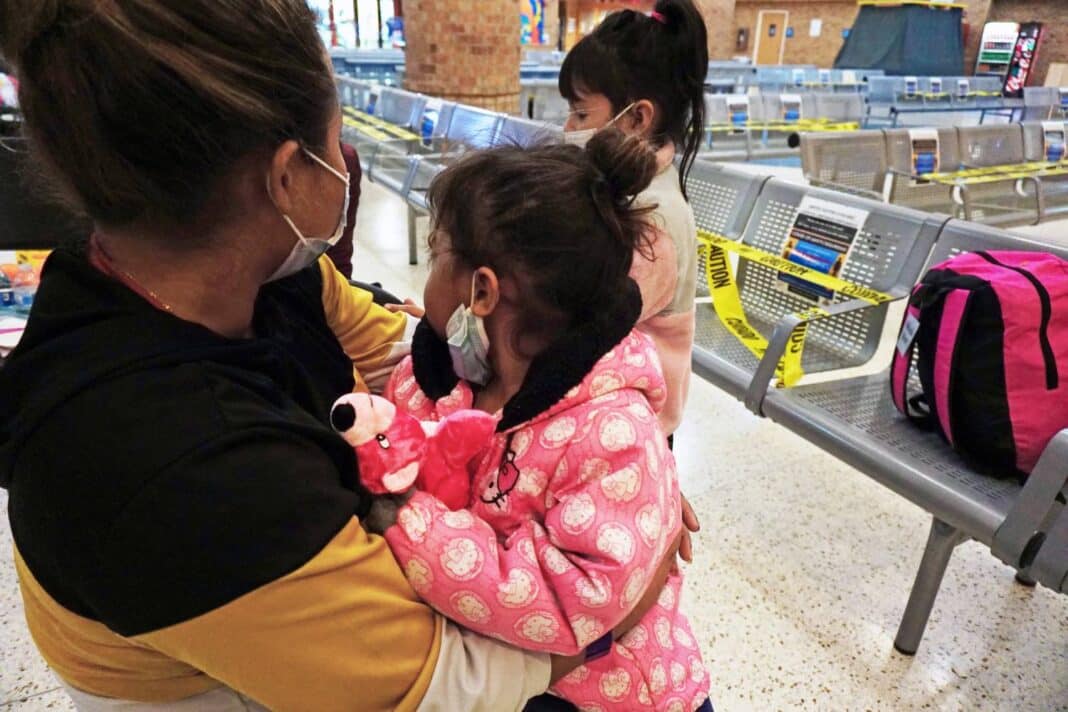More children are coming to the border alone and staying in U.S. Border Patrol detention longer than the 72-hour limit. While federal officials declined to share details of the time children are spending in detention, information shared with The Monitor shows critically overburdened holding facilities with few options of relief in the Rio Grande Valley.
“Time in custody numbers is law enforcement sensitive. I’m not going to discuss the specific numbers of how long the children are in custody,” Troy Miller, who’s the senior official performing the duties of the U.S. Customs and Border Protection commissioner, said Wednesday during a media call.
Over the last 10 days, agents in the Valley encountered an average of 250 children traveling into the U.S. alone per day, according to a source with knowledge of the situation.
Children who enter alone must then be moved to a federal shelter under the U.S. Health and Human Services’ Office of Refugee Resettlement. Yet, out of an average of 250 children detained each day last week, the ORR took an average of 20 children a day from Border Patrol’s custody in the Valley.
The slow pace is keeping children detained by U.S. Border Patrol longer than the 72 hours dictated by federal policy.
Of the nearly 1,800 children in custody in the Valley area as of Tuesday, about two-thirds were in holding for more than the three-day limit, according to the source. About a third of the 1,800 children were in detention for more than five days.
“We’re doing everything that is possible to move the children out of our custody as quickly as we should in a safe and healthy manner,” Miller said Wednesday.
The agency reported 29,792 children were apprehended from October 2020 through February 2021. Of those, about 3,000 were under the age of 12.
A total of 100,441 apprehensions were reported across the southwest border last month. It represented a 28% increase over January 2021. Nearly three quarters, 72,113, were expelled from the border through a public health federal code known as Title 42, which was implemented by the Trump administration.
Miller said children receive priority in processing over adults and families. Then they’re medically checked.
“Minor issues are treated on site such as lice, scabies. Major issues are referred to hospitals, so healthcare professionals can take care of the children,” the acting senior official said.
While the children are in Border Patrol custody, they receive a place to sleep, food three times a day, blankets, mats or cots, water and snacks at holding areas like the tent facility in Donna, Miller said.
Once ORR takes custody of the children, they are moved to a long-term care facility or released into the country with a relative or sponsor.
“One of the intricacies of ORR and additional bed spaces, they have to work with the state licensing agencies to free up those beds,” Miller said during the media call.
ORR has yet to respond to a request for a statement as of press time.
CAPACITY OVERSTRETCHED
Capacity is strained within the Rio Grande Valley sector after they lost their largest holding facility last year due to a year-long renovation project. Currently, they can hold a little over 700 people throughout the sector, according to the source
As of Tuesday, about 3,000 people were in custody across the Valley; about 1,800 of that group were children. The overall number represents more than three times what they are able to hold.
Border Patrol can continue to expel the majority of adults and families, but some families and all children are not subject to the expulsions.
To relieve stress on their facilities and to attempt to get closer to the 72-hour detention limit, agents from the Valley started releasing families into the U.S. who have an asylum claim and can present to an immigration court on a later date. Migrants were released first in McAllen and Brownsville, but even to Laredo and El Paso from the Valley.
Even so, about 40% of those in custody across the Valley as of Tuesday were there for over 72 hours, and 20% of those in custody were there over 120 hours.
NEW RELIEF OPTIONS
The Biden administration announced Wednesday they reinstituted the Central American Minors program that was terminated in 2017.
Under the program, Central American parents lawfully in the U.S. can reunite with their children from their home countries of Honduras, Guatemala and El Salvador.
“This program provides a safe, legal, and orderly alternative to the risks incurred in the attempt to migrate to the United States irregularly,” a statement from the U.S. Department of State reads.
The program will open in two phases: “the first will process eligible applications that were closed when the program was terminated in 2017, and the second will begin to accept new applications with updated guidance to follow.”
All suspended cases eligible for the first phase were already identified and agencies will begin contacting parents to verify they are still lawfully in the country before the program begins.
The process is set to begin as soon as Monday.
This new program, CAM, is one strategy the Biden administration is trying to dissuade child migration, Southern Border Ambassador Roberta Jacobson said during a news conference at the White House on Wednesday.
“The perception is not the same as the reality, in terms of the border not being open. But we want to provide through CAM, through other mechanisms, ways for some of these young people to be reunited with family members in the United States,” Jacobson said. “It’s really important that people not make the dangerous journey in the first place, that we provide them with alternatives to making that journey because it’s not safe en route.”




